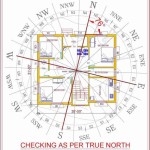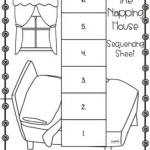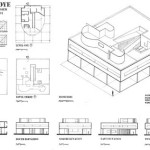Designing your own house floor plans can be an exciting and rewarding experience. It allows you to create a unique living space that perfectly fits your needs and desires. However, it can also be a daunting task, especially if you're not sure where to start. Here are some tips to help you get started: 1.
Define Your Needs and Wants:
Start by clearly defining your needs and wants for your new home. Consider the number of bedrooms and bathrooms you need, the size of the kitchen and living areas, and any special features you desire, such as a home office or a garage. 2.Gather Inspiration:
Look through home design magazines, websites, and social media platforms to gather inspiration for your floor plan. Save images of house designs that you like and make a list of the features you'd like to incorporate into your own home. 3.Choose a Suitable Software:
There are various software programs available to help you design your floor plans. Some popular options include SketchUp, AutoCAD, and Home Designer Pro. Choose a software that is user-friendly and suits your skill level. 4.Start with a Rough Sketch:
Begin by creating a rough sketch of your floor plan on paper. This will help you visualize the layout of your home and make adjustments as needed. 5.Consider the Flow:
Pay attention to the flow of your floor plan. Make sure that the rooms are connected in a logical and efficient manner. For example, the kitchen should be easily accessible from the dining area and living room. 6.Include Storage Space:
Don't forget to incorporate sufficient storage space in your floor plan. This could include closets, cabinets, and built-in shelves. 7.Optimize Natural Light:
Try to design your floor plan in a way that maximizes natural light. Position windows and doors strategically to allow plenty of sunlight to enter the home. 8.Consider Outdoor Spaces:
If you're designing a home with a backyard, think about how you want to use the outdoor space. Include a patio or deck for entertaining, or a garden for growing vegetables and flowers. 9.Get Feedback:
Once you have a draft of your floor plan, share it with friends, family, or a professional architect or designer. Their feedback can help you identify areas for improvement. 10.Finalize Your Design:
After incorporating any necessary changes, finalize your floor plan. Make sure that all dimensions and measurements are accurate and that the layout meets all building codes and regulations. Designing your own house floor plans can be a challenging but rewarding process. By carefully planning and considering all aspects of your design, you can create a unique and functional living space that perfectly suits your lifestyle.
House Plans How To Design Your Home Plan

House Plans How To Design Your Home Plan

Design Your Own Home House Designing Homes

House Plans How To Design Your Home Plan

Creating Your Dream Custom Floor Plan Citadel Signature Homes

Choosing The Best Floor Plan For Your Modular Home Next

Floor Plans Learn How To Design And Plan

From Sketch To Reality How Design A House You Ll Love

Custom Home Designs Design Your Dream Pulte

Customize Your Floor Plan Diyanni Homes








